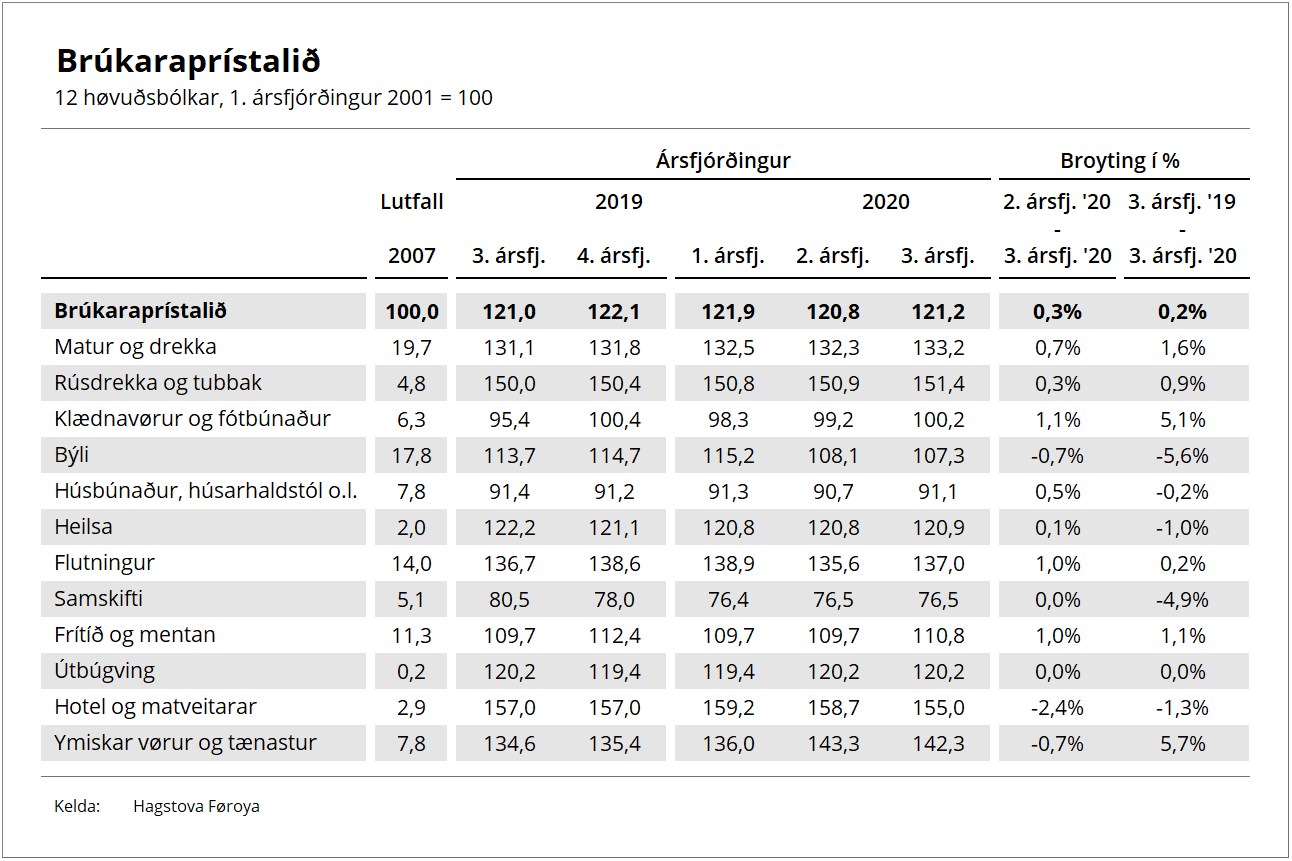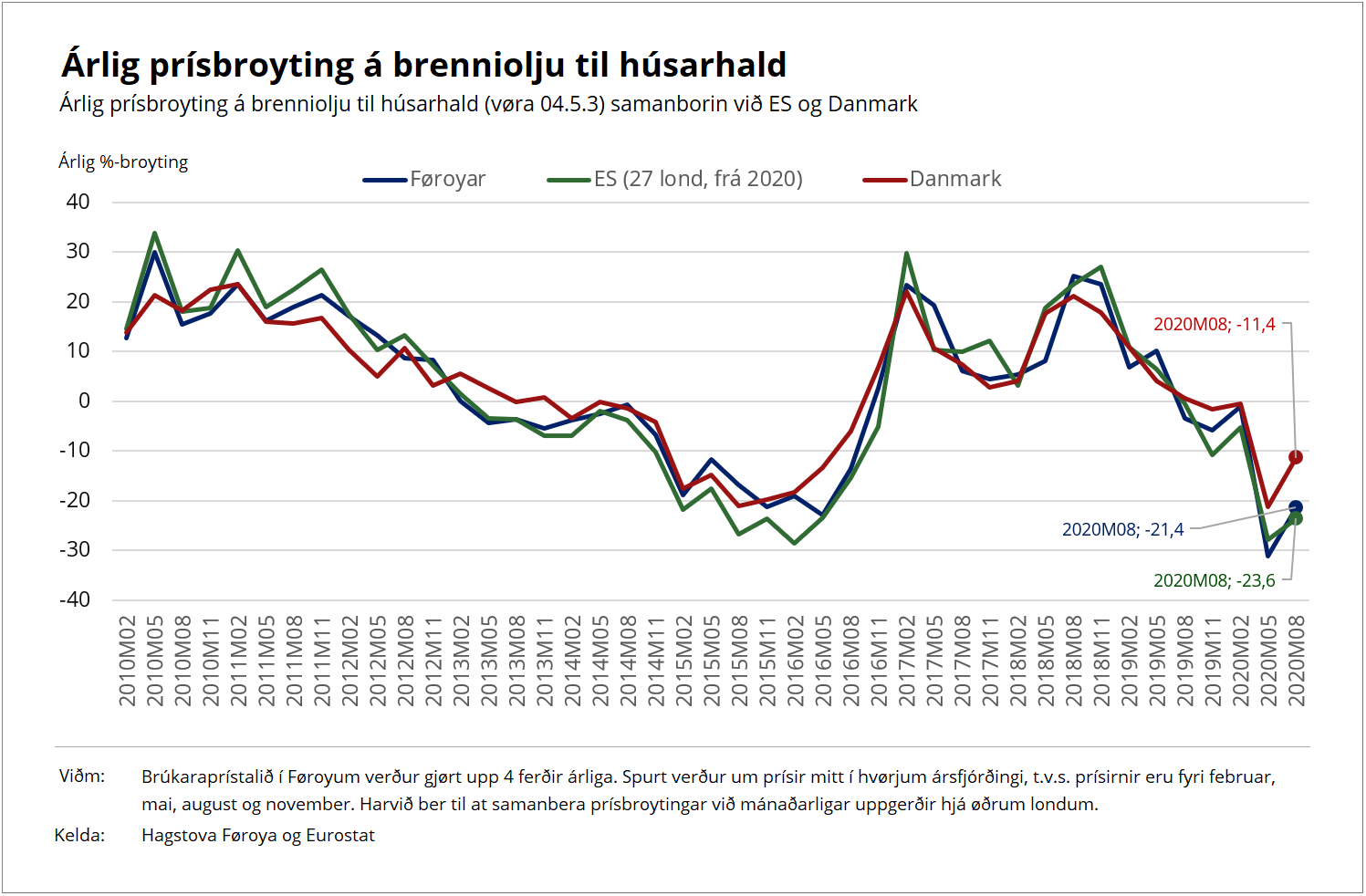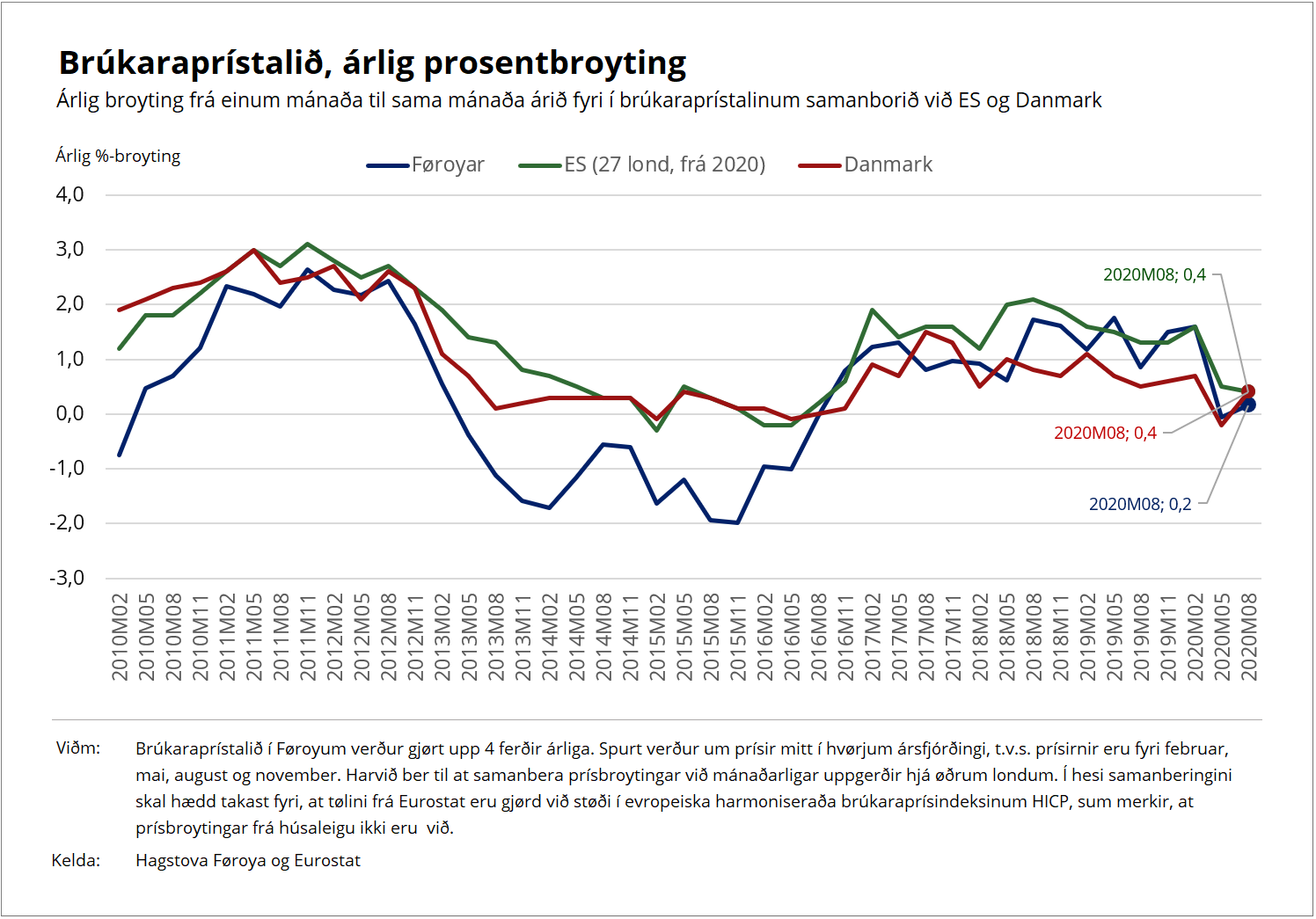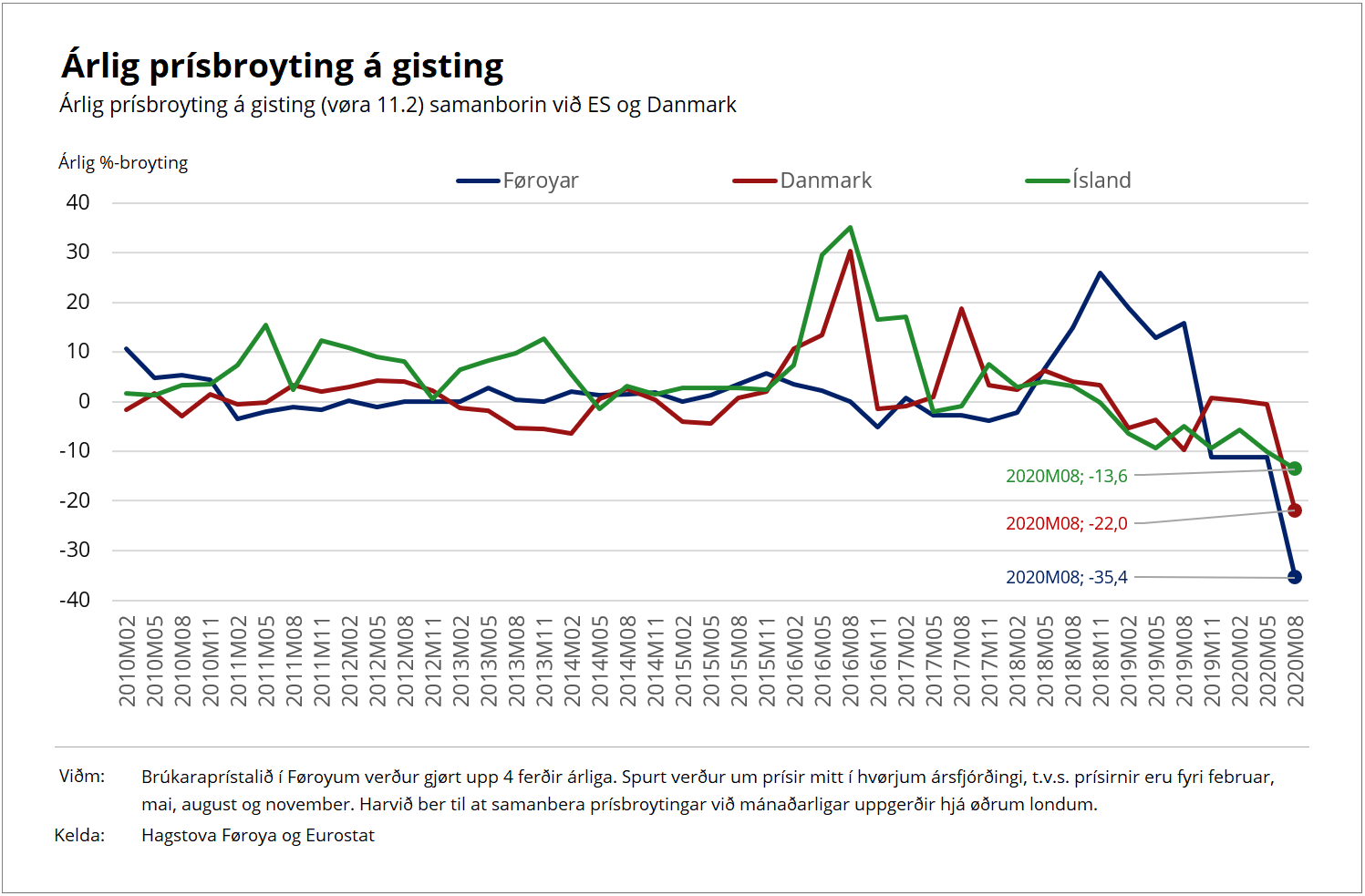Consumer price index
15. Oct 2020
Liquid fuel prices going up while hotel stays become cheaper

The consumer price index consists of 12 main categories of goods and services. The effect that each category has on the overall price index is weighted according to consumption levels.
Prices in the commodity groups ‘housing, electricity and heating’, ‘communications’, ‘hotels and restaurants’ and ‘health’ have gone down, while prices in categories such as ‘clothing and footwear’ have increased.

The graph below shows the significant effect the international drop in oil prices had on liquid fuel for household consumption in Q2 2020. Representing a significant portion of the total spending of an average Faroese household, liquid fuel has a relatively large effect on the total consumer price index. The significant Q2 price drop of oil led to negative figures in the total consumer price index in the Faroe Islands and elsewhere in the world. The Q3 price is now on an increase, but it remains well below the Q3 2019 level.

The price increase for oil in Q3 is the key reason for the annual change in the total consumer price index returning to positive.

The Covid-19 pandemic has hit the international tourism industry hard, which is reflected in a big drop in the price of hotel stays. The average price of staying in a Faroese hotel has dropped 35% in the past year, compared to 14% in Iceland and 22% in Denmark. However, since hotel stays represent a relatively small portion of average household spending, this price drop does not affect the total consumer price index as much as e.g. the liquid fuel price change.

The graph below shows the effect of price changes in each of the 12 commodity groups on the total consumer price index when taking into account the relative importance of the goods and services as measured in relation to the total consumption of households. The figures for Q2 show a 0.1% year-on-year decrease in the total consumer price index, while for the Q3 figures, this increase rises to 0.2%. As in the previous report, the low international oil prices are the key factor in the negative annual change in the consumer price index, while other commodity groups such as groceries and clothing have seen price increases.
